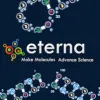Take a look inside 3 images
EteRNA
Pros: Useful concepts are introduced with each completed puzzle, and students get to help science when they create their own puzzles.
Cons: Information is presented too quickly, with little help provided throughout play.
Bottom Line: Students will enjoy the mix of puzzle solving and creating and will learn some science along the way, but awkward pacing could lose students who don't grab content immediately.
EteRNA is best used as supplemental work -- either prior to or just after -- more detailed lessons on RNA and DNA. Use in the classroom may be disruptive, as teachers cannot control the conversations being held in the chat panel built into the basic interface of the game. However, being able to communicate with, learn from, and even become one of the top-level player-designers of EterRNA can provide extraordinary insight into the subject matter. In a more differentiated classroom, EteRNA could be a great side-project for students drawn to the biological sciences as they could dig deeper into the experience's creative aspects, and compete to get their designs synthesized.
EteRNA teaches students about RNA and the different shapes it takes. Students are given control over RNA bonds (ACGU), which directly affect the RNA molecule's shape. Each student changes the proteins in a chain until the natural shape that the chain would take matches the shape of the puzzle. Featuring a rich chat feed and forums, EteRNA's community offers help to those who need it. After completing enough challenges, players may create levels for others to play, and may in turn complete the challenges presented by others. Top rated, player created RNA designs compete for a chance at stardom -- synthesis at an actual lab at Stanford. In this way, EterRNA is a platform for collaboration between researchers and players leading -- potentially -- to scientific discoveries.
Students will find a moderate amount of information about molecular biology, although it is delivered quickly and without ceremony. Kids who struggle to sort through a lot of information will need to repeat tutorials a few times, or get outside reinforcement. Once they master things, students can participate in the crowd source content production that fuels the research that built this game. While most kids won't get to this level of achievement, for those that do, they'll be thinking critically and creatively -- trying to do their part to design something that gets used in the lab and contributes to breakthrough scientific research.











